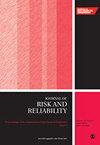一个基于自然语言处理和机器学习的框架,用于从报告中对道路事故的严重程度进行分类
IF 1.8
4区 工程技术
Q3 ENGINEERING, INDUSTRIAL
Proceedings of the Institution of Mechanical Engineers Part O-Journal of Risk and Reliability
Pub Date : 2022-12-20
DOI:10.1177/1748006x221140196
引用次数: 1
摘要
道路安全分析通常由领域专家根据事故报告中包含的信息进行。主要的挑战是难以考虑大量文本形式的报告,以及报告中所载专家判断的主观性。这项工作开发了一个基于自然语言处理(NLP)和机器学习(ML)相结合的框架,用于自动分类事故,最终目的是协助专家进行道路安全分析。比较了文本报告表示的两种不同模型(层次狄利克雷过程(hdp)和Doc2vec)和三种基于ml的分类器(人工神经网络(ann)、决策树(dt)和随机森林(RFs))。该框架应用于美国国家公路交通安全管理局提供的道路事故报告存储库。通过将HDP主题建模和RF分类相结合,实现了分类准确性和所获得结果的可解释性之间的最佳权衡。本文章由计算机程序翻译,如有差异,请以英文原文为准。
A framework based on Natural Language Processing and Machine Learning for the classification of the severity of road accidents from reports
Road safety analysis is typically performed by domain experts on the basis of the information contained in accident reports. The main challenges are the difficulty of considering a large number of reports in textual form and the subjectivity of the expert judgments contained in reports. This work develops a framework based on the combination of Natural Language Processing (NLP) and Machine Learning (ML) for the automatic classification of accidents with the final aim of assisting experts in performing road safety analyses. Two different models for the representation of the textual reports (Hierarchical Dirichlet Processes (HDPs) and Doc2vec) and three ML-based classifiers (Artificial Neural Networks (ANNs), Decision Trees (DTs) and Random Forests (RFs)) are compared. The framework is applied to a repository of road accident reports provided by the US National Highway Traffic Safety Administration. The best trade-off between accuracy of the classification and explainability of the obtained results is achieved by combining HDP topic modeling and RF classification.
求助全文
通过发布文献求助,成功后即可免费获取论文全文。
去求助
来源期刊

Proceedings of the Institution of Mechanical Engineers Part O-Journal of Risk and Reliability
ENGINEERING, MULTIDISCIPLINARY-ENGINEERING, INDUSTRIAL
CiteScore
4.50
自引率
19.00%
发文量
81
审稿时长
6-12 weeks
期刊介绍:
The Journal of Risk and Reliability is for researchers and practitioners who are involved in the field of risk analysis and reliability engineering. The remit of the Journal covers concepts, theories, principles, approaches, methods and models for the proper understanding, assessment, characterisation and management of the risk and reliability of engineering systems. The journal welcomes papers which are based on mathematical and probabilistic analysis, simulation and/or optimisation, as well as works highlighting conceptual and managerial issues. Papers that provide perspectives on current practices and methods, and how to improve these, are also welcome
 求助内容:
求助内容: 应助结果提醒方式:
应助结果提醒方式:


